Student architects lead the way on a new wave of campus furniture

On a warm spring afternoon during the final week of what had already been an unusual semester at Northeastern, Joseph E. Aoun, president of the university, could be seen bobbing over a grassy expanse near the Interdisciplinary Science and Engineering Complex.
Was he jumping up and down? Taking advantage of the mild weather for some outdoor calisthenics?
Neither, as it turned out. Aoun was sitting on one half of a seesaw that was installed on campus this week—one of four new pieces of furniture to grace the Boston campus as the result of a new architecture studio course, Furniture Urbanism.
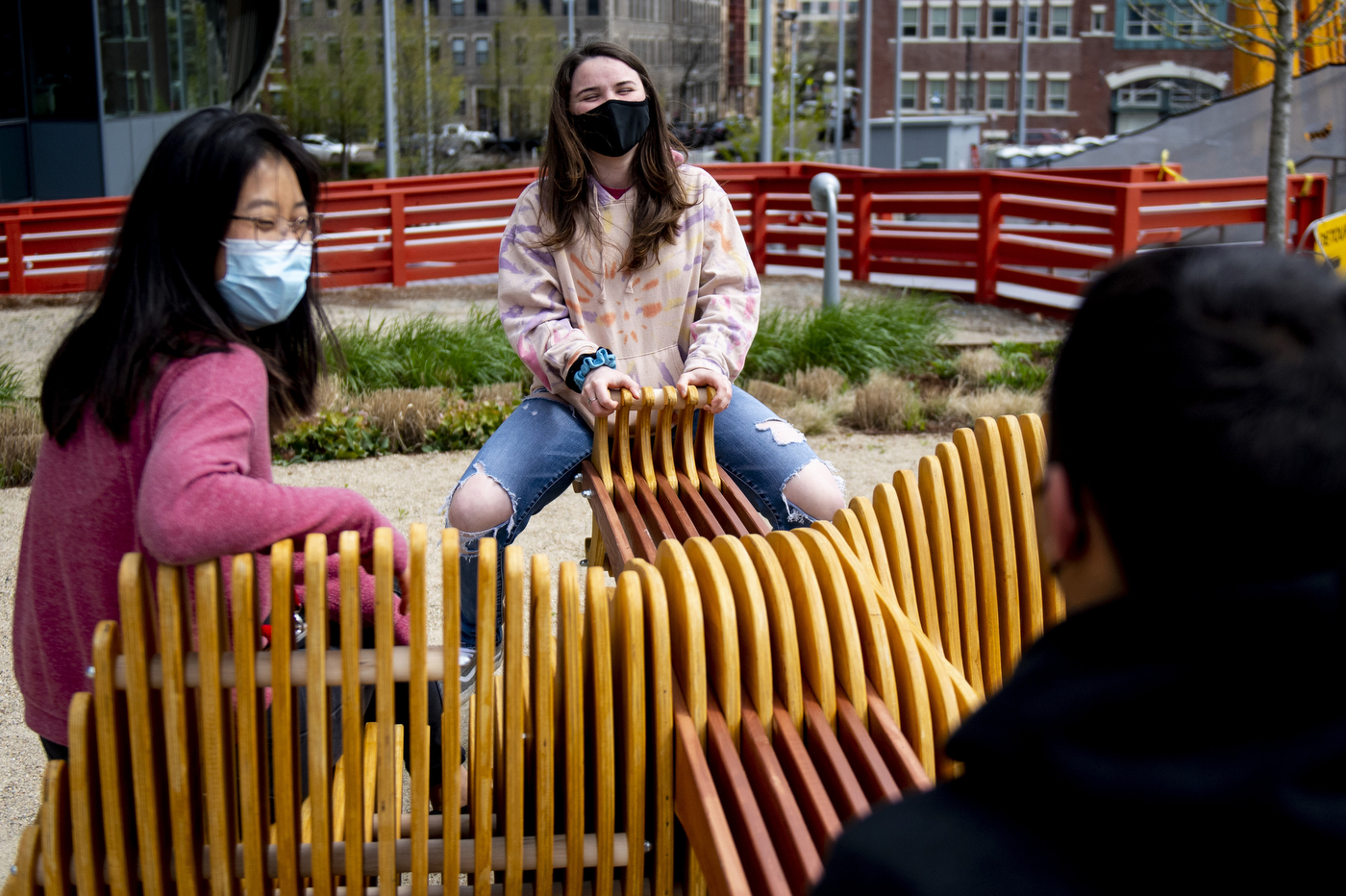
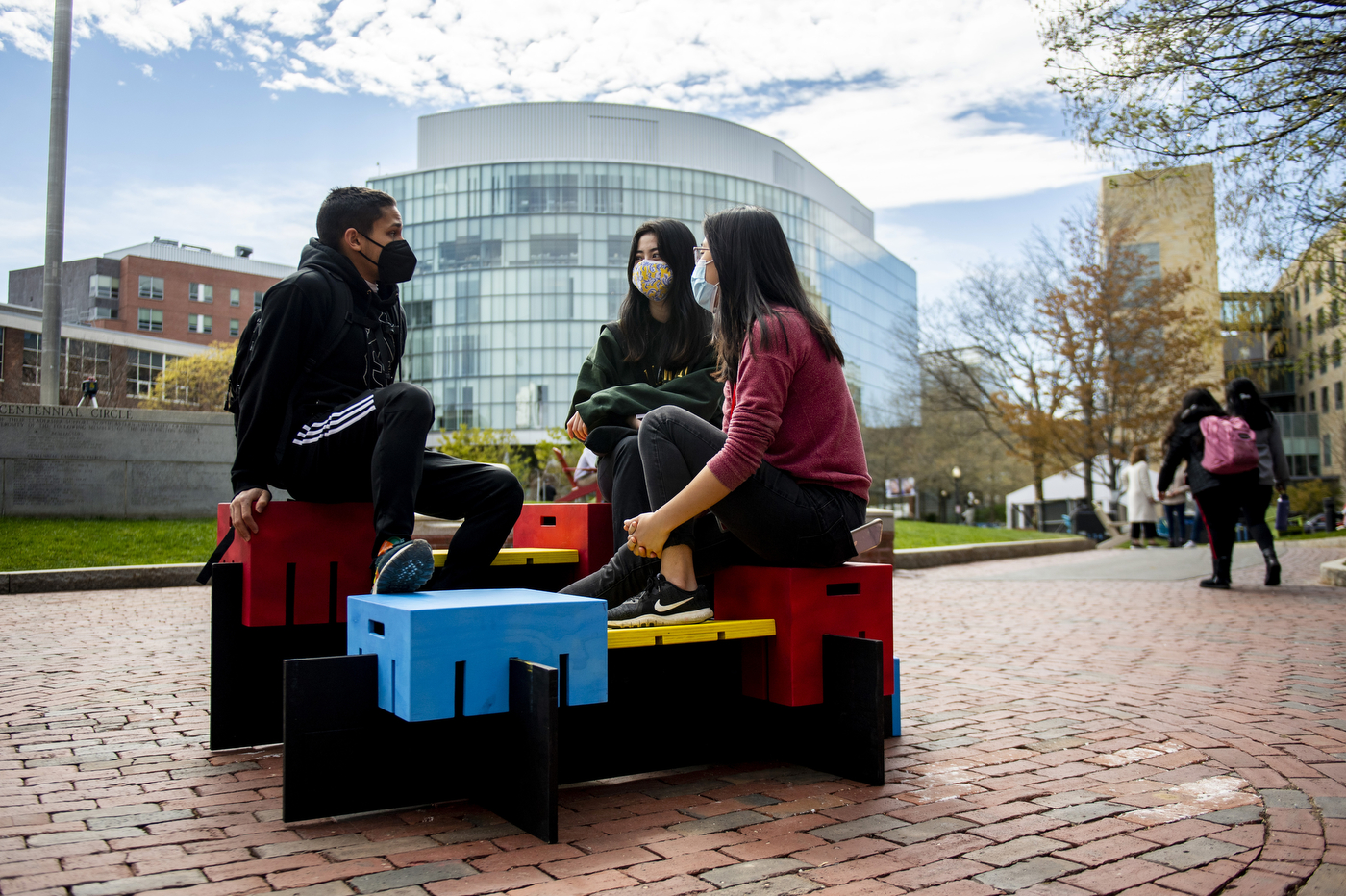
The piece, called “Wooden Wave,” was designed and built by four architecture students in the class: Alexandria Batiste, Mark Lewis, and Adrian Ramon, who are fourth-year students, and Adele Biehl, a third-year student.
“We wanted to make a social piece, something that would bring people together after this year of isolation,” Batiste said.
Students in the course spent the first half of the semester designing pieces of furniture that could be added to outdoor spaces to foster a sense of community. During the second half, they created four teams, combined their ideas, and worked with the university’s facilities department to design and build full scale pieces that were installed on campus.

Those projects, which went from digital designs to tangible furniture in the College of Arts, Media and Design makerspaces, can be found on Centennial Common, Richardson Plaza, between Ryder Hall and Ruggles Station, and, as Aoun discovered, next to ISEC.
“So much of our academic careers is spent sharing and critiquing designs with other architecture students, it’s exciting to be able to put something out there for the whole community—to be able to see it physically in front of you, outside the computer,” said Megan Arseneau, a third-year student who helped design and build the piece on Richardson Plaza. Acadia Alden, a fourth-year student, and Arpi Dayian, a third-year student, were also part of the team.
The course was introduced this year as an option for architecture students who would normally spend a semester abroad. Worldwide restrictions to mitigate the spread of COVID-19 made such travel impossible this year.
But the students, as well as Peter Wiederspahn, an associate professor of architecture who ran the course along with makerspace manager Patrick Kana, hope it continues beyond this year.
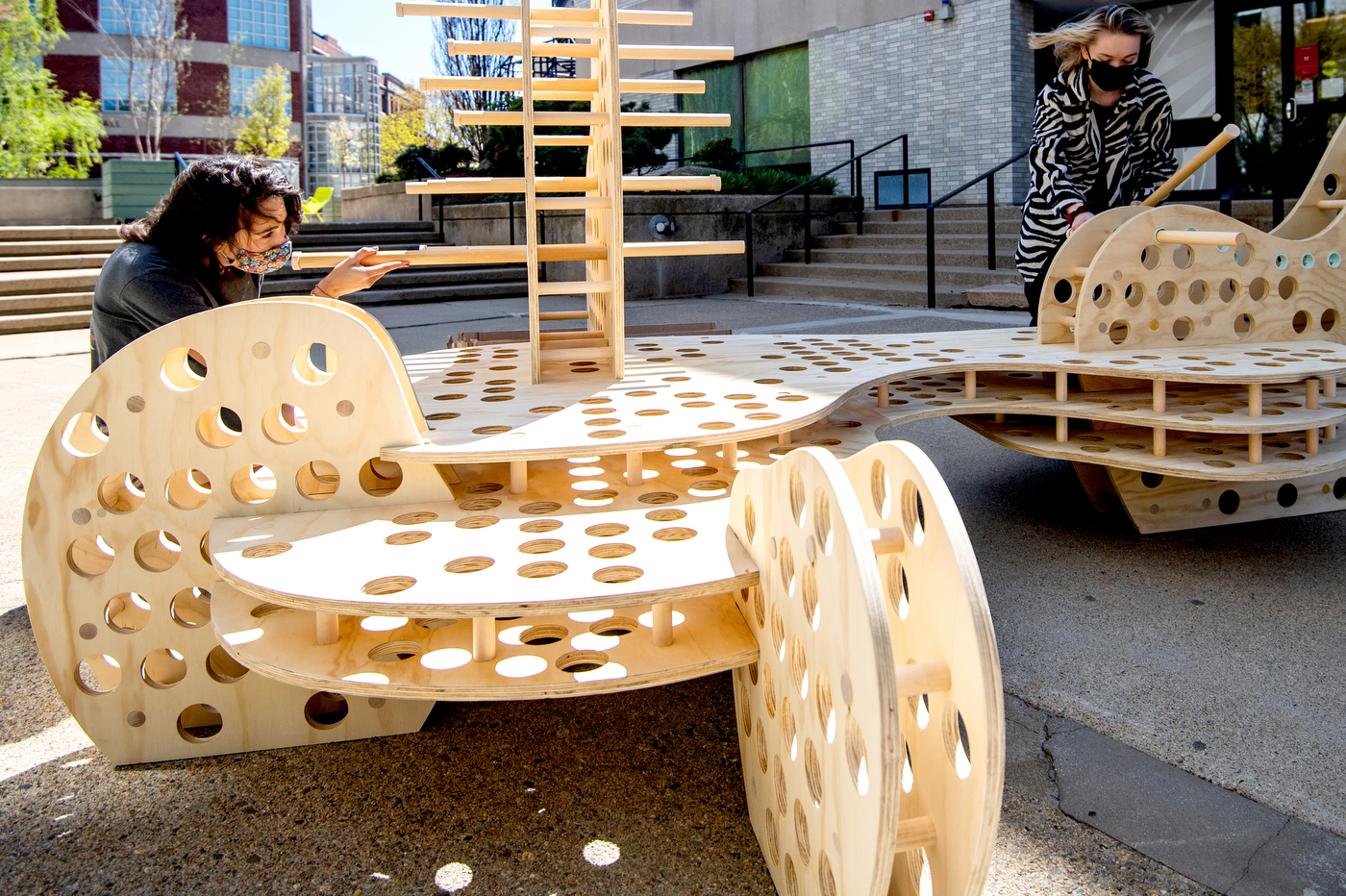
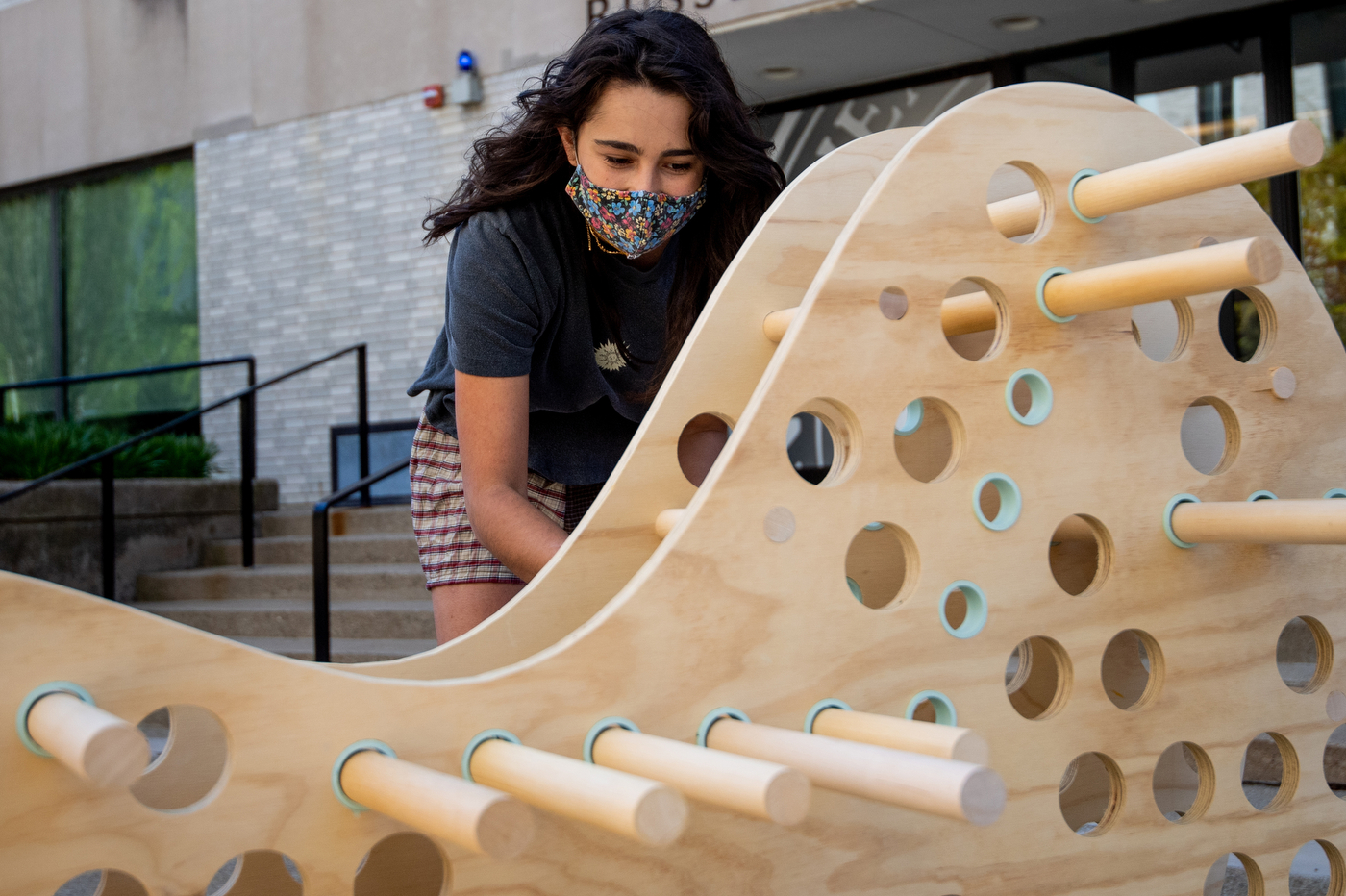
“It’s been incredible to watch these students work together and find innovative ways to overcome the very real challenges of budget restraints, safety and accessibility considerations—issues every architect faces in their work,” Wiederspahn said.
Wooden Wave, for example, was originally going to be 20 feet long, Ramon said. “But we had to really decide what was feasible given our budget and our timeframe,” he said.
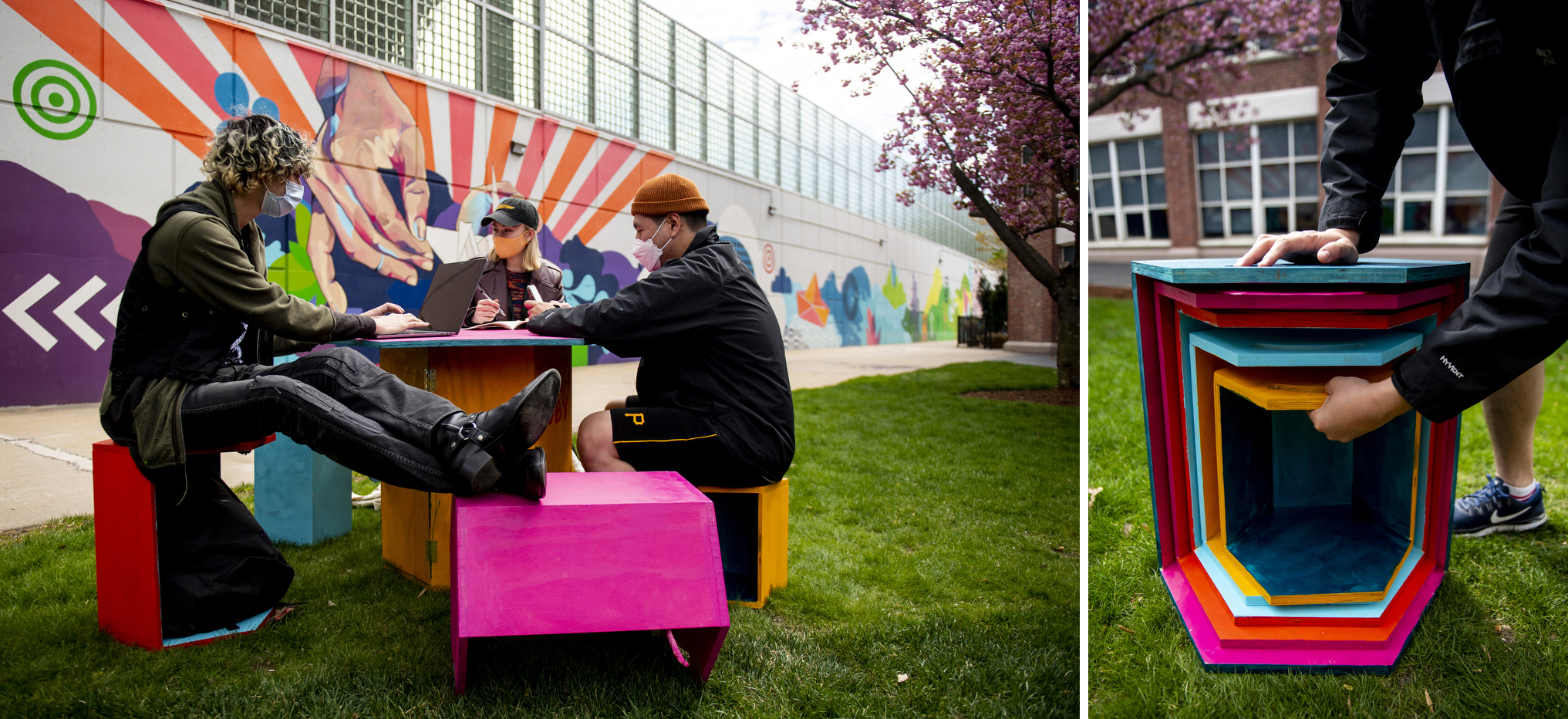
Each of the four final projects incorporates some element of the students’ individual projects, as well.
In their piece on Richardson Plaza, Dayian said that Arseneau conceptualized a series of sliding dowels that can be rearranged to change the way the furniture is used, Dayian offered the organic, flowing shape of the piece, and Alden created a grid-like support structure that undergirds the whole thing.
After so much work, the students said they hoped people would actually use the furniture.
“We spend our entire education designing these large spaces, and this was the first time we’ve been able to address the communities we’re designing for,” Alden said. “I hope it fosters those relationships and encourages people to interact with our work, and interact with the material we’re working on.”
For media inquiries, please contact media@northeastern.edu.





